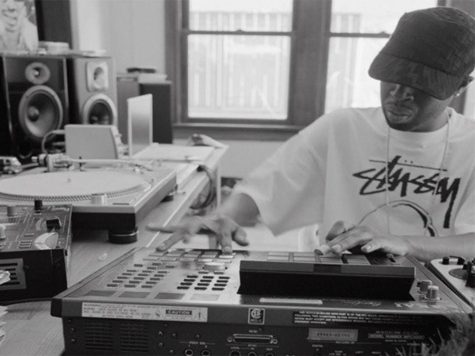The Rise of Lumbersexual and the Music that Matches
October 26, 2015

Courtesy of Fast Horse Inc
Nine times out of ten, if you see me on the quad walking to class, I’m wearing an unbuttoned flannel with a t-shirt underneath, jeans, and my beat-up gray canvas shoes. I’m not necessarily trying to put forth any kind of aesthetic—it’s just what is comfortable. But there was one day that I looked like the stereotype of a “lumbersexual.” I had my usual outfit on; this time it was a yellow and blue flannel with a Skinny Lister t-shirt. But, since it was ridiculously cold, I dug out my AU Pep Band beanie and threw it on as well. Before leaving, I glanced at myself in the mirror and I honestly laughed at myself for a good minute before walking out the door. I looked like a goddamn hipster lumberjack. But it got me thinking. As of late, the aesthetic that many men (and even some women) are choosing to put on has become increasingly rugged. Outside of the fashion world, there are also many bands that are rising out of obscurity that provide the soundtrack.
The first band that comes to mind is the ever-loved Mumford & Sons. I remember hearing “Little Lion Man” on the radio for the first time back in high school with its banjos and boot-stomping chorus and genuinely being confused as to why it was so popular. This was the kind of music that would appeal to weirdos like me, not the mass population. But socially, people that are essentially, for lack of a better term, “hipsters” (or at least want to be), want to emphasize with working-class, “rugged” roots now more than ever. This can be seen in other places beyond music and fashion. The surge in popularity of Pabst Blue Ribbon is due to the same reasons. It was seen as the beer of the working-class American (well, at least, outside of the Pittsburgh area. People there down Iron Citys like there is no tomorrow). People that want to be seen as a working class American will drink that beer. They will listen to music that breeds bluegrass and folk music because they “want to” like it while alt rock or punk iswhat they actually like.
Acts like Mumford & Sons and even Bon Iver manage to firmly fill that niche for the mainstream, but there are plenty of less mainstream acts that do similar things. And, to many “hipsters,” their lack of commercial success makes them feel more genuine. Bands like the aforementioned Skinny Lister, Admiral Fallow, Old Man Markley, and Larry & His Flask do the same type of things as Mumford & Sons (and better, in my opinion). The instrumentation is typical of traditional folk bands, maybe with the addition of an electric guitar or two, and the subject matter combines the usual problems folk bands would sing about, but updating them.

Courtesy of Skinny Lister
Take the Skinny Lister song I linked earlier, “Trouble on Oxford Street.” The song is unique for a number of reasons. First of all, it is mostly in the time signature of 3/2 (or a REALLY FAST 6/4), but that’s just my music major showing. Second of all, its subject matter—a bar fight—is so incredibly common that it’s almost at the point of oversaturation. What Skinny Lister does however, is unique. It’s not a ballad—they don’t give the explicit details of what the “Trouble” on Oxford Street actually is. It is heavily implied that the narrator was drunk and pissed people off—as that is what usually happens in bar fights—but no characters are named, and only general locations and concepts are given. This is a much more contemporary style of storytelling in music and contrasts with the ballad style usually associated with folk music.
So, it’s kind of another “chicken-or-the-egg” situation here. Did the rise in popularity of appearing “rugged” and genuine allow for the rise of this melting pot of folk, bluegrass, and punk to form, or vice-versa? Either way, I truly don’t care. I’m going to dress the way I want to and listen to the music I want to. Because I’m a free American and I can.













